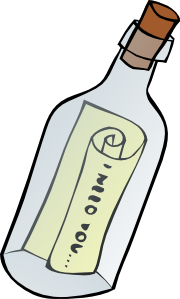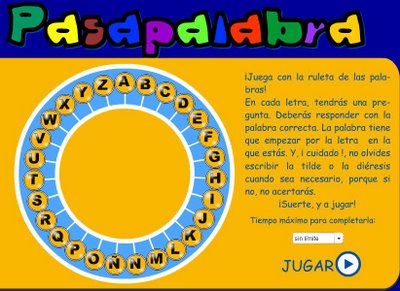HISTORY FOR KIDS

Learn a bit more about History by clicking on the following links:
Modern World History (WW1 and WW2)

Learn a bit more about History by clicking on the following links:
Modern World History (WW1 and WW2)

Robert Wilhelm Bunsen (March 30, 1811-August 16, 1899) was a German chemist. He perfected the burner that was named after him, and worked on emission spectroscopy of heated elements.
Bunsen was the youngest of four sons. After attending school in Holzminden, he studied chemistry at the University of Gottingen. He received his doctorate at 19 and then, from 1830 to 1833, traveled across western Europe. During this time, he met Runge, the discoverer of aniline, Justus von Liebig in Giessen, and Mitscherlich in Bonn.
After his return to Germany, Bunsen became a lecturer at Gottingen and began experimental studies of the (in)solubility of metal salts of arsenious acid. Today, his discovery of the use of iron oxide hydrate as a precipitating agent is still the best known antidote against arsenic poisoning.
Click here to learn more about him.

(Give reasons to support your answers)
1. What is a machine?
2. What is the difference between a simple machine and a complex machine?
3. Name the six simple machines and explain how they work.
4. What did people use to shoot arrows?
5. What did people build to get water for their plants?
6. What do ramps help us to do?
7. How did the Egyptians workers move the rockds up the ramps?
8. What fuels do most vehicles use today?
9. What vehicles don’t produce smoke or pollution?
10. What type of vehicles use human energy?

Rachael (our former language assistant) has sent us a message with a link to play a game on Simple Machines that you’re going to love.
Here is her message:
Thought this was so cute-- I had WAY too much fun playing it myself, haha-- if anything, it offers easy graphics for when teaching simple machines.
Hope all is well! Xo
Rachael White
Thanks a lot Rachael. We all miss you a lot!!
Click here to start the game SIMPLE MACHINES

Pincha aquí para repasar la geografía mundial y sus gentilicios.
En este otro link encontrarás actividades para repasar los países y capitales de Europa.
Y en este otro podrás repasar las capitales de América.
¡¡¡SUERTE!!!
Just as electricity can make magnetism, so magnetism can make electricity. A bicycle dynamo is a bit like an electric motor inside. When you pedal your bicycle, the dynamo clipped to the wheel spins around. Inside the dynamo, there is a heavy core made from iron wire wrapped tightly around—much like the inside of a motor. The core spins freely inside some large fixed magnets. As you pedal, the core rotates inside these outer magnets and generates electricity. The electricity flows out from the dynamo and powers your bicycle lamp.
The electric generators used in power plants work in exactly the same way, only on a much bigger scale. Instead of being powered by someone’s legs, pedalling furiously, these large generators are driven by steam. The steam is made by burning fuels or by nuclear reactions. Power plants can make enormous amounts of electricity, but they waste quite a lot of the energy they produce. The energy has to flow from the plant, where it is made, to the homes, offices, and factories where it is used down many miles of electric power cable. Delivering electricity this way can waste up to two thirds of the power originally produced!
Another problem with power plants is that they make electricity by burning "fossil fuels" such as coal, gas, or oil. This creates pollution and adds to the problem known as global warming (the way Earth is steadily heating up because of the energy people are using). Another problem with fossil fuels is that supplies are limited and they are steadily running out.

Photo: Making clean, renewable energy from the wind. Each of these giant turbines contains an electricity generator.
There are other ways to make energy that are more efficient, less polluting, and do not contribute to global warming. These types of energy are called renewable, because they can last indefinitely. Examples of renewable energy include wind turbines and solar power. Unlike huge electric power plants, they are often much more efficient ways of making electricity. Because they can be sited closer to where the electricity is used, less energy is wasted transmitting power down the wires.
Wind turbines are effectively just electric generators with a propeller on the front. The wind turns the propeller, which spins the generator inside, and makes a study current of electricity.
Unlike virtually every other way of making electricity, solar cells (like the ones on calculators and digital watches) do not work using electricity generators and magnetism. When light falls on a solar cell, the material it is made from (silicon) captures the light’s energy and turns it directly into electricity. Potentially, this means solar cells are an extremely efficient way to make electricity. A home with solar electric panels on the roof might be able to make most of its own electricity, for example.
Before the invention of electricity, people had to make energy wherever and whenever they needed it. Thus, they had to make wood or coal fires to heat their homes or cook food. The invention of electricity changed all that. It meant energy could be made in one place then supplied over long distances to wherever it was needed. People no longer had to worry about making energy for heating or cooking: all they had to do was plug in and switch on—and the energy was there as soon as they wanted it.
Another good thing about electricity is that it’s like a common "language" that all modern appliances can "speak." You can run a car using the energy in gasoline, or you can cook food on a barbecue in your garden using charcoal, though you can’t run your car on charcoal or cook food with gasoline. But electricity is quite different. You can cook with it, run cars on it, heat your home with it, and charge your cellphone with it. This is the great beauty and the power of electricity: it’s energy for everyone, everywhere, and always.
We can measure electricity in a number of different ways, but a few measurements are particularly important.

Electricity is useful—but it’s dangerous as well. The electricity that travels from power plants is thousands of times higher voltage and more dangerous than the electricity in our homes.
 If you are silly enough to touch or play near power equipment, you could die a very painful and unpleasant death—electricity doesn’t just shock you, it burns you alive. Heed warnings like this one and stay well away.
If you are silly enough to touch or play near power equipment, you could die a very painful and unpleasant death—electricity doesn’t just shock you, it burns you alive. Heed warnings like this one and stay well away.
The electricity that comes out of household power sockets is also dangerous enough to kill, so be sure to treat that with respect too. Don’t play with household power sockets or push things into them. Don’t take apart electrical appliances, because dangerous voltages can linger inside for a long time after they are switched off.
It’s generally safe to use small (1.5 volt) flashlight batteries for your experiments if you want to learn about electricity; they make relatively small voltages and electric currents that do you no harm. Ask an adult for advice if you’re not sure what’s safe.
It’s extremely important to be curious and to experiment—that’s what science is all about. But it’s also important to stay alive. If you’re not sure about anything electrical, be sure to leave it well alone.
For an electric current to happen, there must be a circuit. A circuit is a closed path or loop around which an electric current flows. A circuit is usually made by linking electrical components together with pieces of wire cable. Thus, in a flashlight, there is a simple circuit with a switch, a lamp, and a battery linked together by a few short pieces of copper wire. When you turn the switch on, electricity flows around the circuit. If there is a break anywhere in the circuit, electricity cannot flow. If one of the wires is broken, for example, the lamp will not light. Similarly, if the switch is turned off, no electricity can flow. This is why a switch is sometimes called a circuit breaker.
You don’t always need wires to make a circuit, however. There is a circuit formed between a storm cloud and the Earth by the air in between. Normally air does not conduct electricity. However, if there is a big enough electrical charge in the cloud, it can create charged particles in the air called ions (atoms that have lost gained some electrons). The ions work like an invisible cable linking the cloud above and the air below. Lightning flows through the air between the ions.
Materials such as copper metal that conduct electricity (allow it to flow freely) are called conductors. Materials that don’t allow electricity to pass through them so readily, such as rubber and plastic, are called insulators. What makes copper a conductor and rubber an insulator?
A current of electricity is a steady flow of electrons. When electrons move from one place to another, round a circuit, they carry electrical energy from place to place like marching ants carrying leaves. Instead of carrying leaves, electrons carry a tiny amount of electric charge.

Electricity can travel through something when its structure allows electrons to move through it easily. Metals like copper have "free" electrons that are not bound tightly to their parent atoms. These electrons flow freely throughout the structure of copper and this is what enables an electric current to flow. In rubber, the electrons are more tightly bound. There are no "free" electrons and, as a result, electricity does not really flow through rubber at all. Conductors that let electricity flow freely are said to have a high conductance and a low resistance; insulators that do not allow electricity to flow are the opposite: they have a low conductance and a high resistance.
For electricity to flow, there has to be something to push the electrons along. This is called an electromotive force (EMF). A battery or power outlet creates the electromotive force that makes a current of electrons flow. An electromotive force is better known as a voltage.
Help engineering director Elena design and manufacture a cell phone to help senior citizens get the most out of new technology!

If you’ve ever sat watching a thunderstorm, with mighty lightning bolts darting down from the sky, you’ll have some idea of the power of electricity. A bolt of lightning is a sudden, massive surge of electricity between the sky and the ground beneath. The energy in a single lightning bolt is enough to light 100 powerful lamps for a whole day or to make a couple of hundred thousand slices of toast!
Electricity is the most versatile energy source that we have; it is also one of the newest: homes and businesses have been using it for not much more than a hundred years. Electricity has played a vital part of our past. But it could play a different role in our future, with many more buildings generating their own renewable electric power using solar cells and wind turbines. Let’s take a closer look at electricity and find out how it works!
Electricity is a type of energy that can build up in one place or flow from one place to another. When electricity gathers in one place it is known as static electricity (the word static means something that does not move); electricity that moves from one place to another is called current electricity.
Static electricity often happens when you rub things together. If you rub a balloon against your jumper 20 or 30 times, you’ll find the balloon sticks to you. This happens because rubbing the balloon gives it an electric charge (a small amount of electricity). The charge makes it stick to your jumper like a magnet, because your jumper gains an opposite electric charge. So your jumper and the balloon attract one another like the opposite ends of two magnets.

Have you ever walked across a nylon rug or carpet and felt a slight tingling sensation? Then touched something metal, like a door knob or a faucet, and felt a sharp pain in your hand? That is an example of an electric shock. When you walk across the rug, your feet are rubbing against it. Your body gradually builds up an electric charge, which is the tingling you can sense. When you touch metal, the charge runs instantly to Earth—and that’s the shock you feel.
Lightning is also caused by static electricity. As rain clouds moved through the sky, they rub against the air around them. This makes them build up a huge electric charge. Eventually, when the charge is big enough, it leaps to Earth as a bolt of lightning. You can often feel the tingling in the air when a storm is brewing nearby. This is the electricity in the air around you. Read more about this in our article on capacitors.
Electricity is caused by electrons, the tiny particles that "orbit" around the edges of atoms, from which everything is made. Each electron has a small negative charge. An atom normally has an equal number of electrons and protons (positively charged particles in its nucleus or centre), so atoms have no overall electrical charge. A piece of rubber is made from large collections of atoms called molecules. Since the atoms have no electrical charge, the molecules have no charge either – and nor does the rubber.

Suppose you rub a balloon on your jumper over and over again. As you move the balloon back and forward, you give it energy. The energy from your hand makes the balloon move. As it rubs against the wool in your jumper, some of the electrons in the rubber molecules are knocked free and gather on your body. This leaves the balloon with slightly too few electrons. Since electrons are negatively charged, having too few electrons makes the balloon slightly positively charged. Your jumper meanwhile gains these extra electrons and becomes negatively charged. Your jumper is negatively charged, and the balloon is positively charged. Opposite charges attract, so your jumper sticks to the balloon.
Photo: A classic demonstration of static electricity you may have seen in your school. When this girl touches the metal ball of a Van der Graaf static electricity generator, she receives a huge static electric charge and her hair literally stands on end! Each strand of hair gets the same static charge and like charges repel, so her hairs push away from one another.
When electrons move, they carry electrical energy from one place to another. This is called current electricity or an electric current. A lightning bolt is one example of an electric current, although it does not last very long. Electric currents are also involved in powering all the electrical appliances that you use, from washing machines to flashlights and from telephones to MP3 players. These electric currents last much longer.
Have you heard of the terms potential energy and kinetic energy? Potential energy means energy that is stored somehow for use in the future. A car at the top of a hill has potential energy, because it has the potential (or ability) to roll down the hill in future. When it’s rolling down the hill, its potential energy is gradually converted into kinetic energy (the energy something has because it’s moving).

Static electricity and current electricity are like potential energy and kinetic energy. When electricity gathers in one place, it has the potential to do something in the future. Electricity stored in a battery is an example of electrical potential energy. You can use the energy in the battery to power a flashlight, for example. When you switch on a flashlight, the battery inside begins to supply electrical energy to the lamp, making it give off light. All the time the light is switched on, energy is flowing from the battery to the lamp. Over time, the energy stored in the battery is gradually turned into light (and heat) in the lamp. This is why the battery runs flat.
Picture: A battery like this stores electrical potential energy in a chemical form. When the battery is flat, it means you’ve used up all the stored energy inside by converting it into other forms.
Simple Machines Activities:
Learn about simple and compound machines while you explore the House and Tool Shed!
The Compound Machine:
Learn how forces and simple machines can work together to create The Compound Machine!

I’m sure you all want to have some fun after this hard week.
Click here and try to beat the clock.
Good luck!!